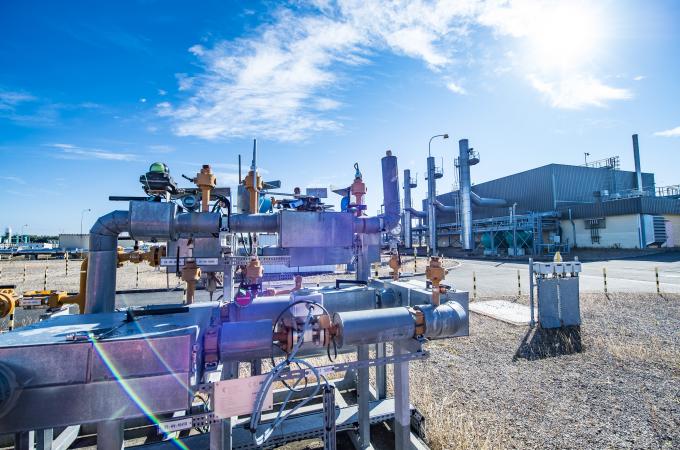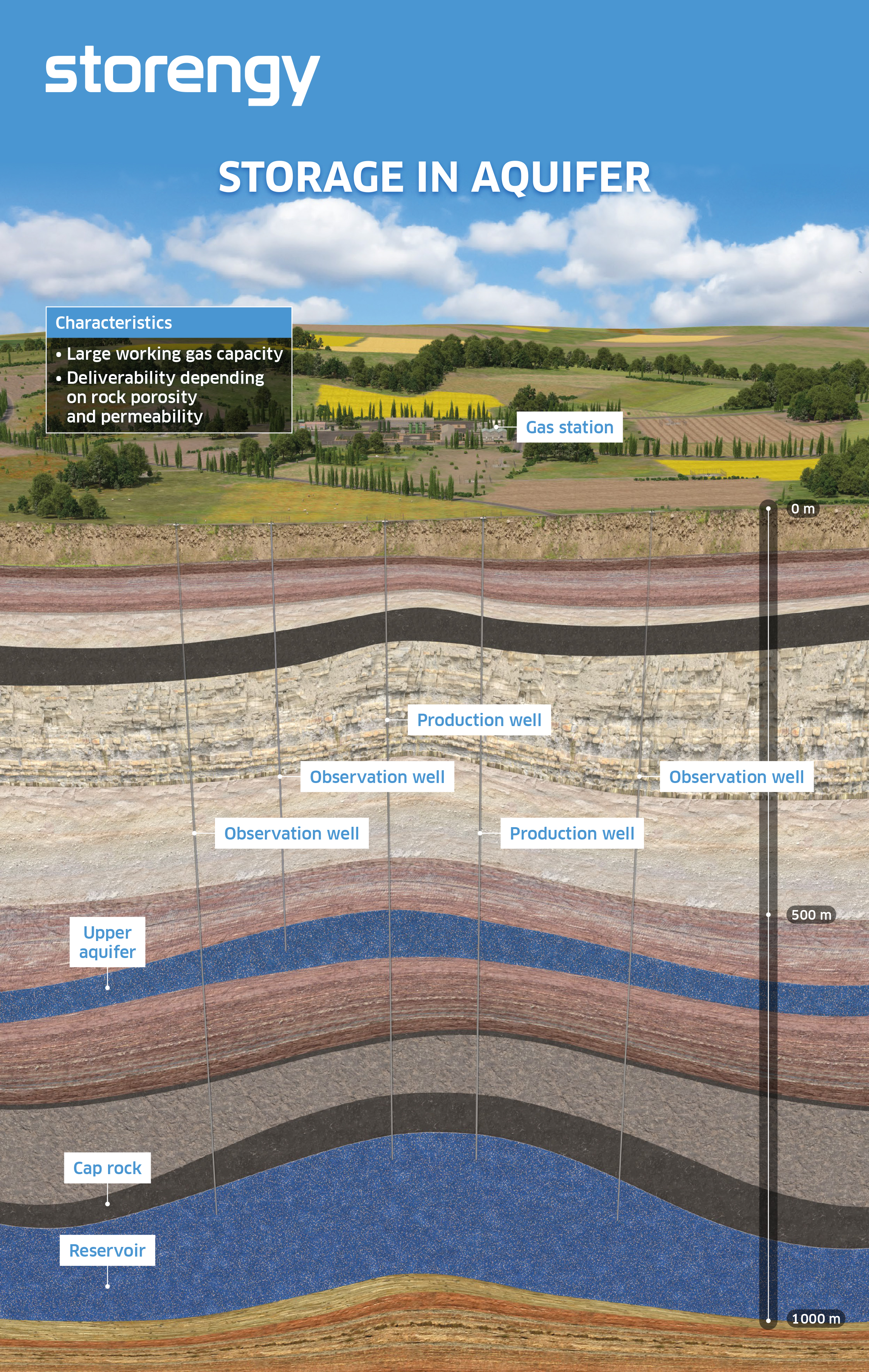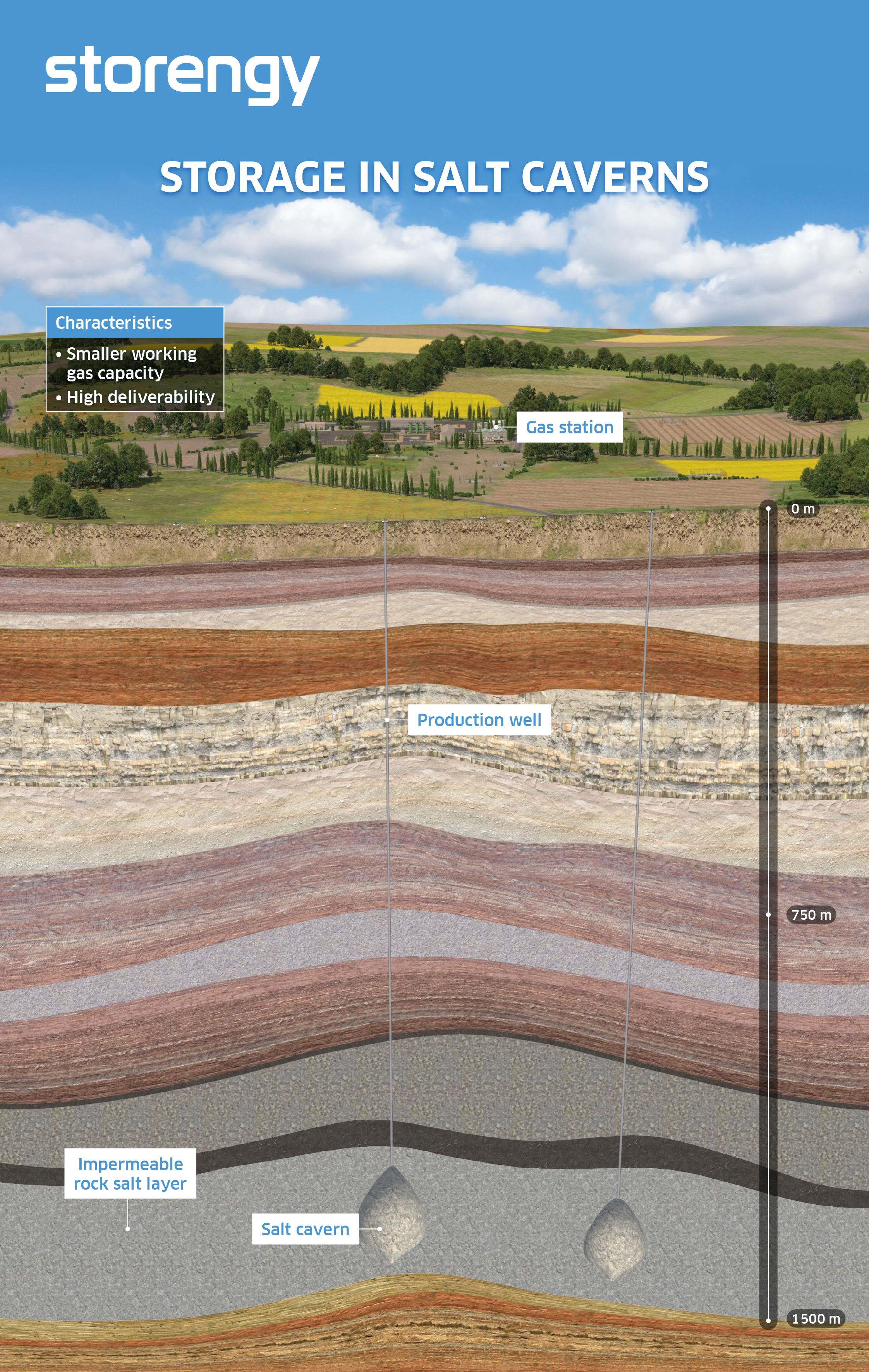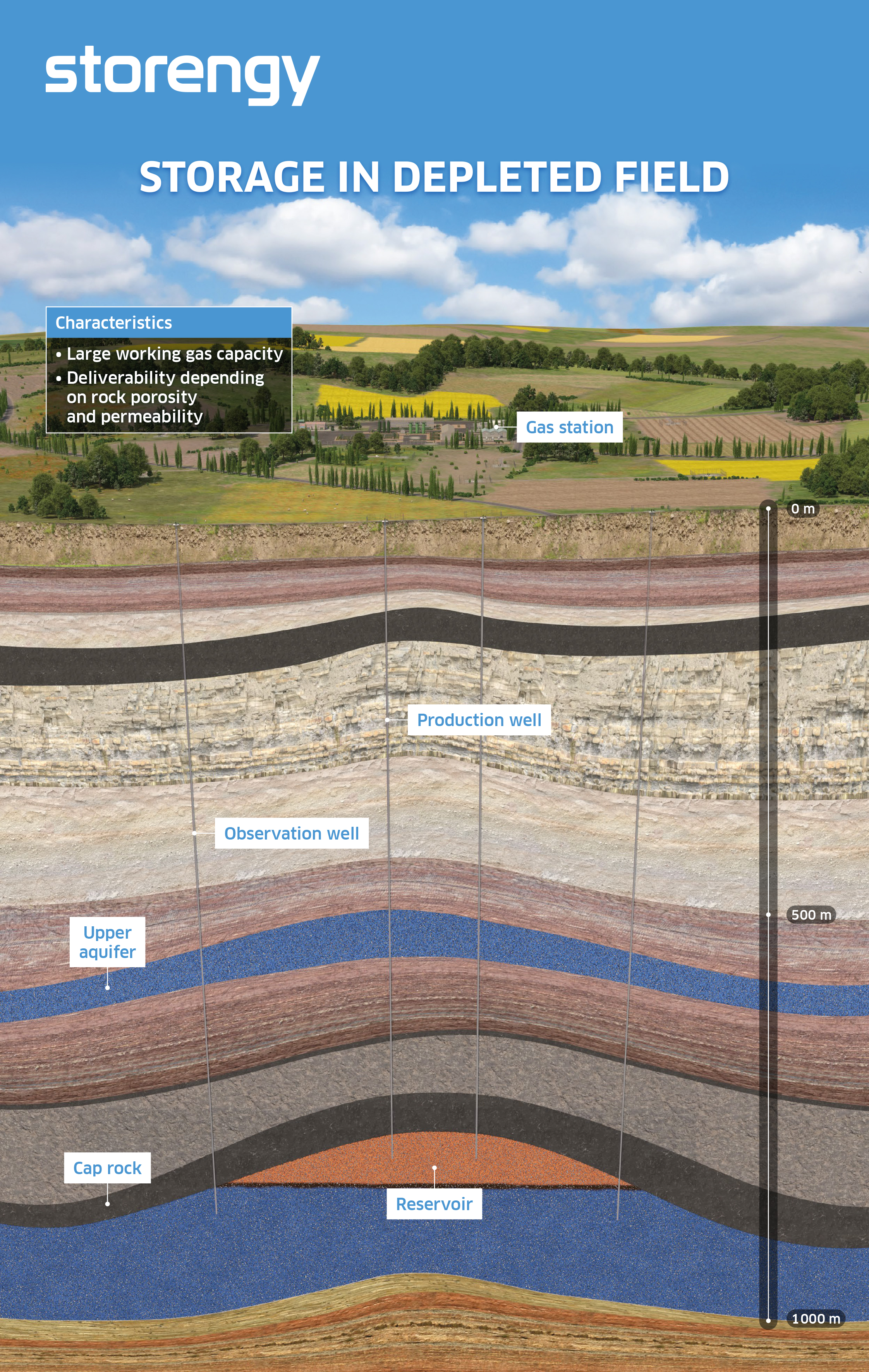Our types of storage facilities
Storage in natural aquifers or in salt caverns: Storengy manages various types of storage

Committed to the energy transition, Storengy offers innovative energy storage solutions to its industrial customers around the world.
Storage in aquifers
Aquifer storage is achieved by injecting natural gas into the rock under pressure at great depth. The gas gradually takes the place of water without modifying the underground architecture. A natural reservoir, the dome-shaped rock structure is topped by a watertight cover made of impermeable rock. It is this cover that ensures the containment of the gas underground.

To learn more about this type of storage, watch this video:
Storengy: Storage in aquifers
Storage in salt caverns
Salt cavern storage facilities consist of a series of cavities dug into deep, thick layers of rock salt. They are obtained by injecting water which gradually dissolves part of the salt. This is then extracted in the form of brine. The space is then free for natural gas which is injected and stored in gaseous form at high pressure. These cavities are impermeable and non-porous and are remarkably tight.

To learn more about this type of storage, watch this video:
Storengy: Storage in salt caverns
Storage in depleted fields
Depleted fields are depleted fields of natural gas or oil. They can then be converted into underground storage. To do this, natural gas is reinjected into a geological structure that has already stored hydrocarbons for several million years.

